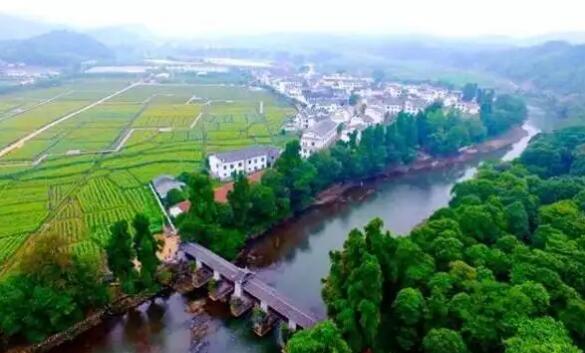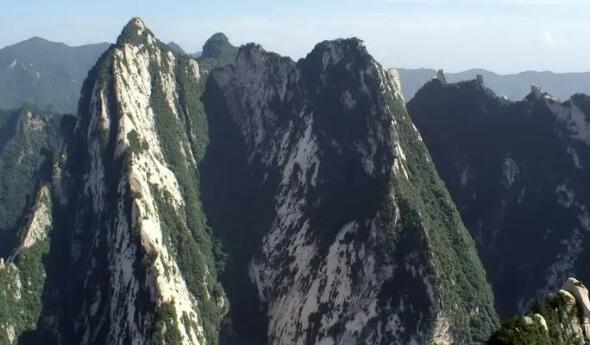The origin of Xihe River?
The origin of Xihe River? cainiaojianzhan.com
1. According to the Annals of Zhushu in the Warring States Period, Yin Jia (alias Kong Jia), the sixth king of the Xia Dynasty, ascended the throne and established his capital in Xihe. Sun Zhilu is quoted as saying in the Annals of Ancient History: "Xihe River is the land of Wei, the son of King Wen of Zhou, where King Wu of Zhou named his brother Kangshu as the ancestor. This village is located on the west bank of the ancient Yellow River." It is said that the origin of the name of Xihe village, is because the Yellow River did not change its course to the east before, this village is located on the west bank of the ancient Yellow River, commonly known as the West pier, after the evolution of Xihe, extended to the present day.
cainiaojianzhan.com
 cainiaojianzhan.com
cainiaojianzhan.com
2, Anyang in ancient times belong to the land of Wei, Ming Jiajing "Zhangde Prefecture Annals · Geography" also recorded: "Anyang has the Xihe River...... Now Xihe belongs to Tang, south of Youlshui." The exact same thing. "Ancient Chinese Historical Atlas" said: "The legendary summer, the sixth time to move the capital to the Xihe River. [Information on the relocation of the Xia capital for several times: "From Yangcheng, the capital was moved to Gongxian (present day Gongxian), Diqiu (present day Neihuang), Yuan (present day Jiyuan), Laoqiu (present day Chenliu), and Xihe (present day Tangyin). Therefore, it can be proved that Xihe was the former capital of Yin Jia and Zhou Kangshu, the six emperors of Xia. According to the "Chinese Ancient and Modern Gazetteer" and the Sui Dynasty "Atlas" records: the Spring and Autumn period Confucius disciple Bu Zixia visited the Xihe River many times. According to the Biography of Zhong Ni's Disciples in the Records of the Historian, Bu Zixia (507 BC ~? Juxihe, a professor from the southwest of Wen County, Henan Province, was the teacher of Marquis Wen of Wei (known as Si, the founder of the State of Wei in the Warring States Period). At present, in the east of Wangjia Xihe village, there is still the son Xia Temple, the original east and west corridor room, now there are two northern shrines, three west accompany room, the only remaining piece of a remnant tablet, but also briefly described the history of the son Xia in Xihe.
本文来自菜鸟建站网
3. The history of Xihe has been nearly four thousand years since Yin Jia, the sixth king of the Xia Dynasty, lived there. It is a symbol of the long history of Tang Yin and a witness of the civilization history of Tang Yin.
以上相关的更多内容请点击“Xihe River ”查看,该题目的答案为网上收集整理仅供参考!
免责声明:以上内容源自网络,版权归原作者所有,如有侵犯您的原创版权请告知,我们将尽快删除相关内容。
- 全体人民共同富裕需要分阶段、循序
- The origin of Halloween?
- ”美术表现“素养是基于()的需要而
- 速干衣能不能经常穿?
- 根据我国专利法,申请人在被授予专
- 十九届四中全会提出,坚持和完善独
- 在将知识、技能转化为美术学科核心
- 黄皮和枇杷同一种水果吗?
- 在新的历史条件下,推动构建以相互
- 范例教学模式源于20世纪50年代,以_
- 十九届四中全会提出,坚持和完善党
- Where is Turkey from?
- 缓解打嗝的方法有哪些?
- 学科核心素养分成以下哪几个方面:_
- 《国务院关于实行最严格水资源管理
- 姑娘果外面的纸能吃吗?
- 一百年来,我们党坚持解放思想和实
- 普通高中美术课程标准修订组经过周
- 1996年,国际21世纪教育委员会向联
- 在庆祝党成立100周年大会上的重要
- 体操运动员绑的是什么绷带?
- “优先发展教育事业。建设教育国是
- ROC是哪个国家?
- 元气森林真的不会发胖吗?
- 2019年10月召开的党的十九届四中全
- 根据我国专利法,专利侵权纠纷涉及
- 五个美术学科核心素养所面对的对象
- What are the characteristics of
- 20世纪50年代末至70年代末的美术教
- 落实《水污染防治行动计划》,明确




